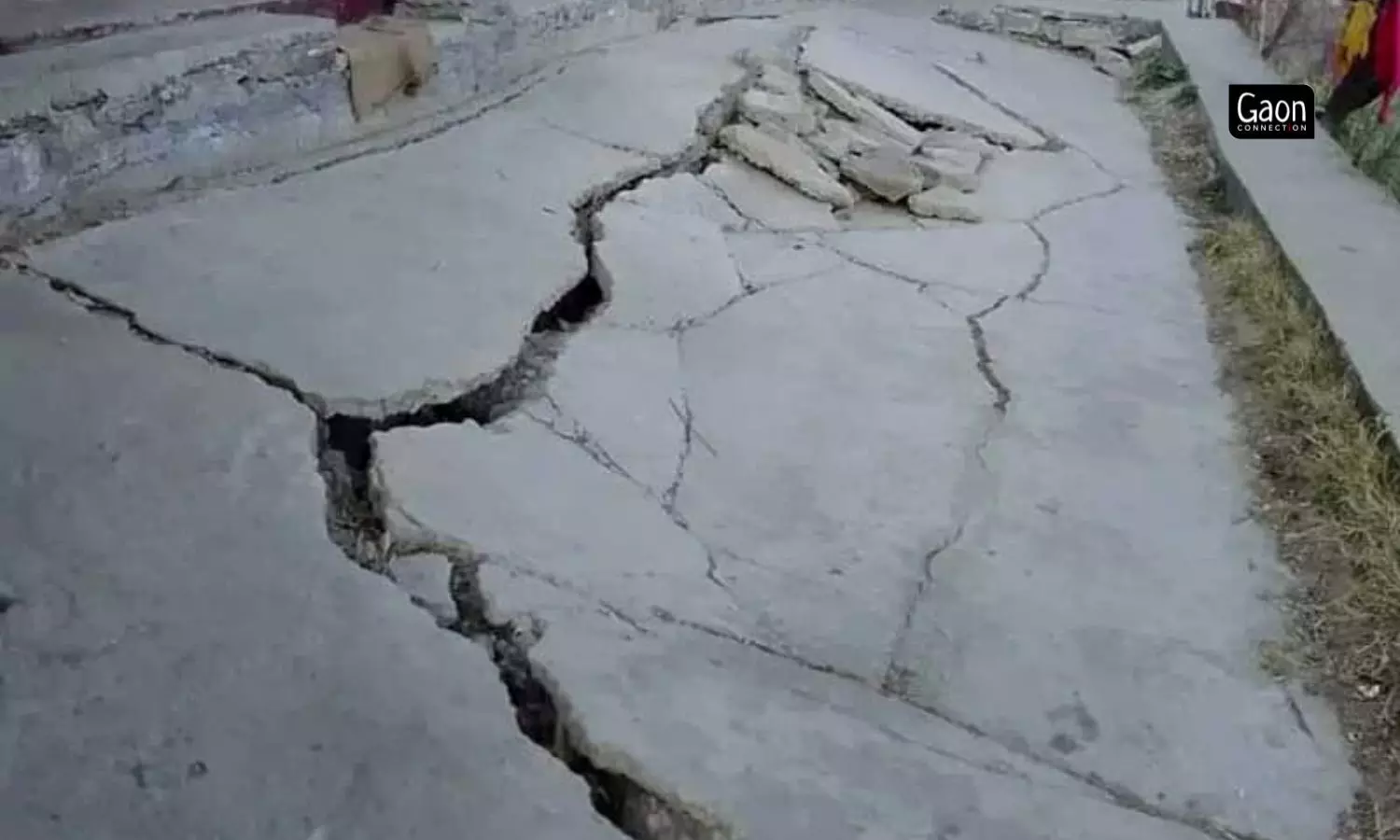The year 2023 started on a sombre note in Uttarakhand. The “sinking” of Joshimath, a prominent town on the famed Badrinath circuit and the gateway to the UNESCO heritage site of Valley of Flowers and ski town of Auli, had just about started to grab national and global headlines.
Water started seeping in people’s homes, and highways were reporting big cracks. The district administration of Chamoli, the town where Joshimath is located, started shifting families to alternate locations. Road and tunnel construction projects were stopped amidst concerns of further damages.
Alarmed by the rapidly evolving situation, the state government took a slew of measures. One of these was the announcement made by Uttarakhand Chief Minister Pushkar Singh Dhami that the state would conduct carrying capacity assessments of different hill towns following the subsidence in Joshimath. He agreed that there was a concern regarding the carrying capacity of hill towns, and promised to stop construction where the limits were found exceeding.
Cut to July 2023, and we have the chief minister Dhami, whose government is determined to set a reckless, new pilgrim arrival record in the rain-battered, ongoing six month Uttarakhand Char Dham Yatra of 2023. To set the context, close to 4.5 million pilgrims arrived last year, paying obeisance at the holy sites of Badrinath, Kedarnath, Yamunotri and Gangotri.
In fact, days before this year’s Yatra started, the state government had set a daily limit of 47,500 pilgrims for the Char Dhams. This was withdrawn in the face of protests by powerful local businesses and the priest community. No logic or reasons were shared on how the carrying capacity was set and why it was promptly withdrawn.
It is this myopic attitude and knee-jerk decision making on the policy and governance front that has become a hallmark of the over-tourism landscape in Uttarakhand. Although the High Court and the National Green Tribunal have often shared their carrying capacity concerns regarding Mussoorie, Nainital and the Char Dhams itself, scant little has come out of their numerous directions.
Also Read: Several tourist places in India have exceeded their carrying capacity
Next, the carrying capacity syndrome is worsened due to the over-centralised tourism model in the state. The majority of footfalls lead to Haridwar, Rishikesh, the Char Dhams, Nainital, Mussoorie, and Jim Corbett National Park.
The government has failed to develop any new tourist destinations. While there have been ambitious announcements of creating 13 new tourist destinations in the 13 districts of Uttarakhand, this, too, lies in limbo as with most other statements of intent that come from the state government.

The carrying capacity syndrome is worsened due to the over-centralised tourism model in the state. The majority of footfalls lead to Haridwar, Rishikesh, the Char Dhams, Nainital, Mussoorie, and Jim Corbett National Park.
The idea behind introducing new destinations was to promote theme-based tourism to attract visitors to lesser-known places. The state government felt that this would give more options to tourists leading to the much needed decongestion from the crowded hill stations of Mussoorie and Nainital.
An expert committee came up with thirteen possible places: Chakrata, Piran Kaliyar, Gairsain-Auli, Chinyalisaur, Tehri Lake, Khirsu, Chopta, Parag Farm, Mukteshwar, Munsiayri, Kausani, Katarmal, and Lohaghat. The idea was to develop concepts such as laser centric, tea centric and meditation-based tourism.
With the removal of Trivendra Singh Rawat as the Chief Minister of Uttarakhand in March 2021, and the subsequent launch of Uttarakhand Tourism Policy 2030, the revised focus is on creating two to three tourism gateway hubs.
These hubs are being envisaged as offering world-class facilities and amenities to visitors, such as all-weather approach roads, ample parking, and high-quality hospitals. Time alone will tell how the new policy that targets tourism to contribute USD 10 billion to Uttarakhand’s economy annually, will perform.
Also Read: After securing rights over 5,352 hectares forest, this tribal village becomes an ecotourism hub
The third, and final element of over-tourism relates to the issue of waste management. The recently-concluded Kanwar Yatra, an annual pilgrimage of devotees of Shiva who come to fetch the holy Ganga Jal, saw over 40 million kanwariyas visiting Haridwar in 12 days!
The authorities pointed out that close to 30,000 MT (or 3 crore kg) waste was generated in their wake. It is important to bear in mind that this figure is only for the town of Haridwar, and does not include the waste generated by the kanwariyas on their way to Haridwar and beyond.
Apart from the solid and plastic waste that flows into the Ganga, there is also the challenge of human faecal waste during the Kanwar and Char Dham Yatras. It is estimated that on average, humans generate 125 grams of faecal waste on a daily basis.

The year 2023 started on a sombre note in Uttarakhand. The “sinking” of Joshimath, a prominent town on the famed Badrinath circuit and the gateway to the UNESCO heritage site of Valley of Flowers and ski town of Auli, had just about started to grab national and global headlines.
A simple back-of-the-envelope calculation based on four-five crore kanwariyas staying locally for two to three days, tells us that there is a likelihood that an additional 10,000 to 15,000 metric tonnes, i.e., 1 to 1.5 crore kg of human faecal waste would have been generated in Haridwar alone.
Where and how this excreta is getting disposed of in a scientific manner is a question that authorities need to answer with clarity and truth.
As I write this, disaster has struck the Yamuna valley in the district of Uttarkashi, throwing life completely out of gear. Heavy rains have wreaked havoc in the district, and there are reports of extreme devastation. Roads, culverts, link roads, farms and houses have been heavily damaged in Purola, Nandgaon, and Barkot areas in the district.
It is these disasters and the model of centralised over-tourism centred around the flouting of carrying capacity principles, as well as massive amounts of waste generation, which Uttarakhand needs to be wary of.
There is no longer room for an attitude of business as usual. Instead, urgent action is needed to reverse the existing, destructive model of over-tourism. Ignoring this at our own peril will surely cost the state and people of Uttarakhand dearly in the long run.
Anoop Nautiyal is an Uttarakhand-based social worker. Views are personal.



















